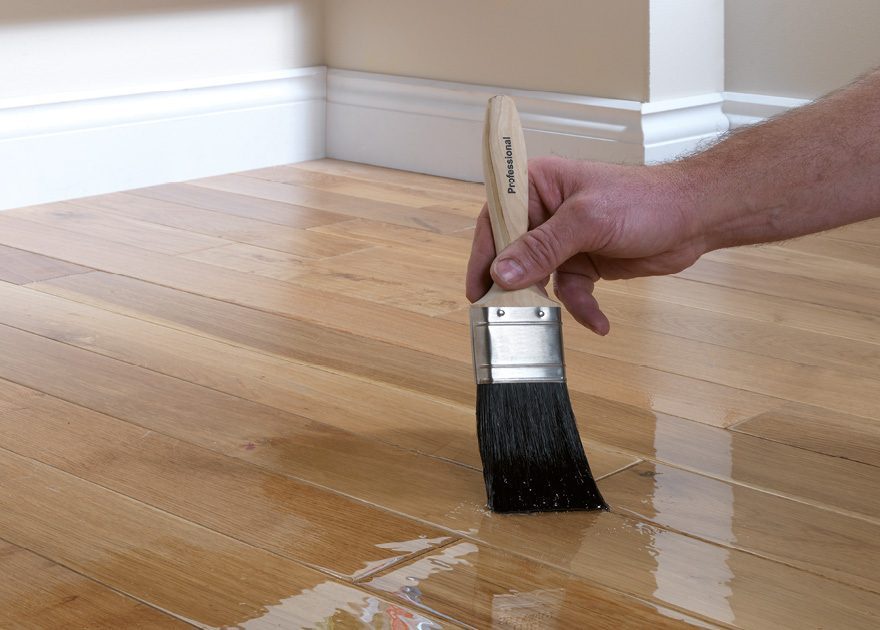Choosing the right floor varnish is paramount when it comes to enhancing the beauty and longevity of wooden floors. A well-selected varnish not only protects your wooden surfaces but also adds a captivating finish that can elevate the aesthetics of your space. However, with many available options, selecting the correct varnish for your wooden floor can take time and effort.
To make the right choice, you need to consider several crucial factors that influence the performance and appearance of your wooden floors. These factors include the type of wood you're working with, the level of foot traffic your floor experiences, the desired sheen or finish, and your personal preferences regarding maintenance and environmental concerns.
Types of Floor Varnish
There are different types of floor varnishes available, each with its own characteristics. Here are some common types to consider:
- Oil-Based Varnish: Oil-based varnishes are known for their durability and ability to enhance the wood's natural grain. Floor varnish provides a rich, warm finish and is suitable for high-traffic areas. However, they may take longer to dry and have a strong odor during application.
- Water-Based Varnish: Water-based varnishes are eco-friendly and dry quicker than oil-based ones. They produce a clear finish and are low in odor. They are a good choice for indoor areas and those with minimal ventilation.
- Polyurethane Varnish: Polyurethane varnishes are highly durable and protect against wear and tear. They come in both oil-based and water-based forms. They can have a glossy or satin finish, depending on your preference.
- Varnish with UV Protection: Consider a varnish with UV protection if your wooden floor is exposed to sunlight. It helps prevent the wood from fading and keeps it looking vibrant for longer.
- Epoxy Varnish: Epoxy varnishes are extremely tough and are often used in commercial settings. They are resistant to chemicals and heavy traffic, making them an excellent choice for high-traffic areas.
Considerations for Choosing the Correct Floor Varnish
- Wood Type: Different wood species have varying characteristics, including grain patterns and porosity. Some woods, like oak, are more forgiving and can work well with various types of varnish. Exotic woods or softwoods may require specific varnishes to achieve the desired results.
- Foot Traffic: Consider the level of foot traffic your wooden floor will endure. High-traffic areas may require a more durable varnish, such as polyurethane or epoxy, to withstand wear and tear.
- Maintenance: Think about your willingness to perform maintenance. Some varnishes may require more frequent recoating or touch-ups, while others are more low-maintenance.
- Environmental Impact: If you're environmentally conscious, opt for water-based varnishes, less harmful to the environment than oil-based ones. Look for products with low VOC (Volatile Organic Compounds) levels.
- Application Method: Consider your expertise and the ease of application. Some varnishes may be easier for DIY enthusiasts, while others require professional application.
- Sample Testing: Before committing to a specific varnish, it's a good idea to test it on a small, inconspicuous area of your floor to ensure it achieves the desired look and meets your expectations.
Floor Lacquer
In addition to floor varnish, lacquer is another option to consider for protecting and enhancing your wooden floors. Floor lacquer, like varnish, offers a protective coating that can improve the appearance and durability of your wooden floors.
- Type of Lacquer: Floor lacquers come in various styles, including water-based and solvent-based paints. Water-based dyes are generally more environmentally friendly and odor less than solvent-based ones. Solvent-based lacquers may offer higher durability but can have more pungent fumes during application.
- Durability: Similar to varnishes, the durability of Floor lacquer can vary. Consider the level of foot traffic your floor will experience and choose a color that can withstand it. High-traffic areas may require a more robust and abrasion-resistant lacquer.
- Sheen or Finish: Floor lacquers come in different sheen levels, including high-gloss, satin, and matte. The choice of finish can impact the aesthetic appeal of your space, so select one that aligns with your design preferences.
Conclusion:
Selecting the correct floor varnish for your wooden floor involves considering factors such as wood type, foot traffic, sheen preference, maintenance level, environmental concerns, application method, budget, and sample testing. Taking the time to make an informed choice will result in a beautiful and long-lasting finish for your wooden floors.


No comments yet